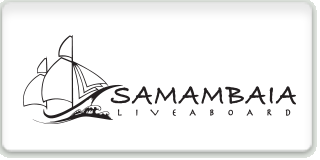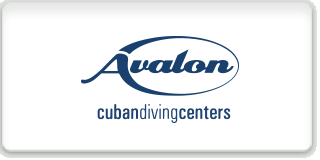GEAR TESTS: Canon EOS R5C Mirrorless CINEMA Underwater Camera Review

 |
JOEL PENNER Chief Technology Guru  |
The Canon R5C Mirrorless Cinema Camera is a very welcoming sight for me! Having used the Canon R5 Mirrorless Camera off and on over the last two years, I'm pleased to say the overheating woes are a thing of the past. The new Canon R5C is a powerhouse, optimized for the video shooter. It feels like an old friend but with even better higher quality specifications coupled with the ability to have an external USB battery pack keeping the camera topped off at 100%, you'll have enough juice to get through a whole day of diving without having to change batteries. Additionally, the built-in fan management system kept the camera cool even under continuous 4K 120fps recording. I never saw the fan status get into the red. It displayed a calming green fan symbol the whole time. This is such a good thing! During the three dives that I got on this camera, I never experienced any overheating issues, and recorded almost exclusively in 4K 120FPS. There are a bunch of different recording options possible with this camera. Recording in 8K 60FPS is possible, as long as you have the external battery back plugged in and know what compression settings to choose. The user experience in the format / high frame rate menus leaves a little to be desired. The settings are all in there, but you have to choose the correct compression/format to then see what resolution and frame rates are available in each mode. (Not all resolutions and frame rates are possible in each compression/format) Not a deal breaker, but something to be aware of when learning the new camera, and something the Canon menu could tip you off to improve the user experience.
Besides the removal of the overheating issue, one of the most refreshing features added into this new Cinema version, is the "One Touch White Balance"! You no longer need to switch to Photo Mode, take a photo, and then switch back to Video Mode, Select Menu, choose set custom white balance, and then apply a custom white balance.
There's a perfectly positioned button on the left side of the housing, that once pressed, automatically updates the white balance based on what you are aimed at. This worked for me 99% of the time without needing to try it on a different target. A pleasant surprise that I discovered while using the Canon R5C underwater is that you can press the White Balance Button at any time! While recording, if you notice something isn't quite neutral, press the white balance button and it updates on the fly.
I filmed the above video primarily in 4K 120FPS using H.265 compression. The Canon R5C doesn't have IBIS, but I don't feel like that's a deal breaker for underwater cinematographers. We can keep things steady enough in the water with good buoyancy and intentional fluid camera moves using your fins. Custom white balances were taken along with using the Keldan AF 12B Cyan Filters and AF 6B Cyan Filters. I love the feel of the new Nauticam NA-R5C Housing. Nauticam keeps improving on their ergonomics. You can tell they're listening to their users and making enhancements with every new release.

 |
CRISTIAN DIMITRIUS Professional Filmmaker  |
For a long time I have been awaiting the opportunity to use the Canon R5C underwater and this finally happened during the Digital Shootout in Bonaire.
The camera is the first true video-centric Canon mirrorless camera, combining the best from the already excellent EOS R5 and the Canon C70 cinema camera. I took it for two days. On the first day, I used it for macro, along with the Nauticam EMWL, focusing on very small blennies, being more static to learn about the camera's features. The ability to shoot Canon Cinema RAW (professional 12-bit RAW footage up to 2.6Gbps) is perfect for high end productions, where we are always required to shoot as flat as possible so the post houses can work their magic and bring the colors they need for the visual aspect of the production.
The camera has two separated menus, one for stills, and one for video and it's easy to get used to both. I used it only for video, as that is my main interest, and I could easily change frame rate, resolution and other features. Monitoring was easy, as the cinema menu includes false color, LUTs, waveform monitor and some more cinema features.
The second day I used for wide angle, using the WACP-1, and had some fun with squids, trying to check the high frame rate capabilities of this camera. The Canon R5C can shoot up to 120fps in 4K and 60p in 8k. I was always shooting in the maximum resolutions and frame rate, trying to make the camera work at its limit, and never had a single overheat problem. The added fan for additional cooling in the R5C really makes the difference and increases the video capabilities of this camera.
The Nauticam housing for the Canon R5C makes it even better. As with all Nauticam housings, it is very ergonomic, we can easily access all camera features with the amazingly engineered button system, that can also be customized in the camera menu. It has one fantastic feature that solves the short battery duration problem, that on land is not as big of a deal, but UW would be a big problem. It has room for a power bank that can easily feed the camera for at least 4 dives. I used it for about 6 hours and still had some juice. This extra battery is also what allows us to shoot 8K RAW, a feature that only works when the camera is connected to an external power source. I was very, very happy with the results I got.
As a Canon shooter and cinematographer working for big productions, this is certainly my new choice when a mirrorless camera is needed, and also my personal camera, and housing, for my diving trips.
 |
Hergen Spalink Nauticam Ambassador  |
 |
TODD WINNER Nauticam Ambassador  |
The R5C is a cinema-centric version of the R5 Mirrorless Camera. They share the same sensor, autofocus system and button layout. The R5C loses the R5's IBIS system but gains a fan to reduce overheating while shooting video. This additional cooling helps when shooting the camera's maximum resolution and frame rate of 8K 60p, an upgrade from the R5's 8K 30p. Of particular note to underwater shooters is the true 'One-Touch' white balancing. One button press, conveniently located within easy reach of the left housing handle generates a custom white balance with no menu navigation necessary. The camera's white balance range appears similar to other Canon DSLR and Mirrorless systems generating exceptional color. Achieving accurate white balance at depth was also easily accomplished. An 'auto-iris' button is excellent when working in variable ambient lighting conditions such as we experienced with the fast moving clouds here in Bonaire. Paired with the SmallHD 503 monitor via an HDMI 1.4 connection assisted with composition. The R5C can be configured to display imaging assistance tools such as peaking, zebras, false color and either a waveform or vectorscope on any of the displays or on the HDMI display or all three. The opacity of the shooting data display can also be customized to create the exact shooting environment you need. The overlays can be assigned to the various custom function buttons to quickly show or hide them. For those long or action packed dives, the optional accessory battery pack provides even longer usage time. Exact time depends of course on the chosen format, frame rate and media and choice of fan mode. The R5C is also an exceptional stills camera mirroring the R5's capabilities.
READ MORE GEAR TESTS:




































